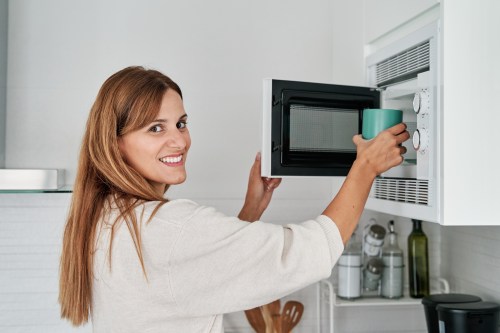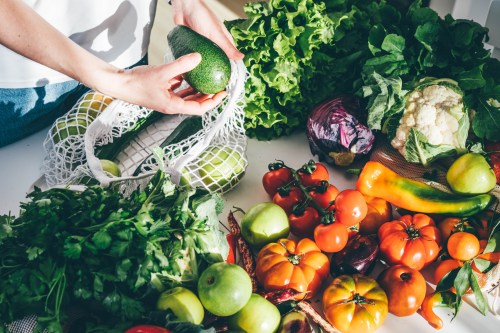Our editors independently select these products. Making a purchase through our links may earn Well+Good a commission
An Entire New Category of Water Was Just Invented—Here’s Everything You Need To Know About the Latest Way To Stay Hydrated
A brand new category of water was just invented. Here's what you need to know about Loftiwater shimmering water, non-carbonated yet fizzy.

“Still or sparkling?” Go out to eat and it’s pretty much always the first question your waiter will ask you. And those are the options, right? You can choose between either regular ‘ol flat H20 or carbonated water. Until now. This month, an entire new water category is entering the market. It’s called shimmering water and it’s the latest way to stay hydrated.
Experts in This Article
Todd Carmichael is the founder and CEO of Loftiwater, a shimmering water brand. He is also the co-founder and former CEO of La Colombe.
The mastermind behind this new type of water is Todd Carmichael, the co-founder and former CEO of La Colombe. (Carmichael stepped down as CEO in October 2021 but still has a role in the company.) Now, he’s turning his attention to perhaps the only beverage Americans drink more than coffee with his new shimmering water brand, Loftiwater.
“Still or sparkling have been the only two types of mouth-feels that have existed in the water category, whereas with food you’re having tons of different mouth-feels,'” Carmichael says of how he came up with the idea for Loftiwater. “Carbonated beverages have been around since [the 18th century] but no one has done anything to modify the bubble since then.”
How is Loftiwater shimmering water made?
Loftiwater shimmering water is non-carbonated fizzy water. It’s still bubbly, but since carbon isn’t used to create the bubbles, it’s gentler in nature, with none of the bite or burn fizzy water as we know it has. “I thought, wouldn’t it be amazing to have a sparkling water that’s sweet instead of acidic and still doesn’t contain any sugar?” Carmichael says. Getting there was a high-school chemistry test come to life.
Traditional carbonated water is made by adding carbon dioxide under pressure, which then creates carbonic acid. The way Carmichael saw it, there were other safe-to-consume gases to experiment with; carbon wasn’t the only one. So, his team got to work, isolating different food grade gases from hydrogen and oxygen and experimenting with how much of each component to combine until the end result was the exact texture they were after—microbubbles with no burn.
“You can carbonate anything. What you’re doing is dissolving a gas into water, using pressure,” Carmichael says. Figuring out what gases to use along with the technology of how to do it were the tricky parts, and they are details the brand is still keeping under wraps for now.
Even though the water is bubbly, since it doesn’t have an acidic bite, you can chug it if you want—something you definitely can’t do with carbonated water. It also doesn’t lose its fizziness as quickly. If you only drink a third of the bottle and stash it in the fridge for later, it will still have virtually the same amount of bubbliness the next day. “This was important to me because a lot of times, people don’t always drink a whole bottle of sparkling water,” Carmichael says. “They drink half, but then it goes flat before they can drink the other half.” Something it still has in common with traditional fizzy water though is that it will give you the urge to burp. After all, you’re still consuming gas.
Figuring out the water texture wasn’t all Carmichael wanted to perfect. He also wanted to make different flavors of the water without using any sugar or additives.
The sweet finish
The shimmering water comes in six different flavors: lemon, grapefruit, black cherry, watermelon, strawberry, and peach. (They retail for $24 for a case of 16.) For every flavor, the only ingredients you’ll see listed on the label are water and natural flavors.
“In order to keep [the product] a water and not another type of drink, it couldn’t have any preservatives. So all that they are flavored with is fruit essences,” Carmichael says. This comes across on the nutritional panel, too: The sugar is kept at zero grams per serving.
While consumers have definitely become more conscious of the sugar content in beverages, more people are also shopping with sustainability in mind. Loftiwater comes in plastic bottles, something Carmichael says he wishes didn’t have to be the case. “The product demands a certain style of packaging to achieve it, which means we have to use plastics right now,” he says. “Having said that, to me, sustainability is a destination and it’s a Northstar I’m always working towards.” It’s not just an empty statement. The brand is working with a company that’s figured out how to make plastic biodegradable and Loftiwater is hoping to have new packaging using this type of technology later this year.
“We’re fully recyclable now, but that’s not enough for me. That puts the responsibility on the consumer when, yes, consumers do have a responsibility, but I want to exercise my responsibility by making something that can be broken apart and added to your garden,” Carmichael says. This certainly isn’t the first time Carmichael has tasked himself with using cutting-edge packaging. He did, after all, figure out how to can a draft latte without losing its foamy head.
Clearly, sometimes it’s worth reinventing the wheel. For centuries there have only been two types of water textures and suddenly there’s a third. It makes you wonder, what will we be thirsty for next?
Oh hi! You look like someone who loves free workouts, discounts for cutting-edge wellness brands, and exclusive Well+Good content. Sign up for Well+, our online community of wellness insiders, and unlock your rewards instantly.
Sign Up for Our Daily Newsletter
Get all the latest in wellness, trends, food, fitness, beauty, and more delivered right to your inbox.
Got it, you've been added to our email list.










